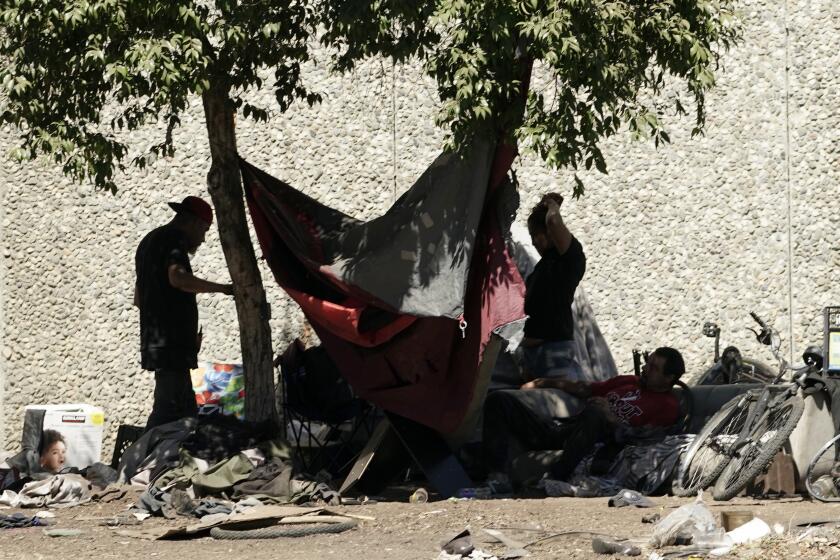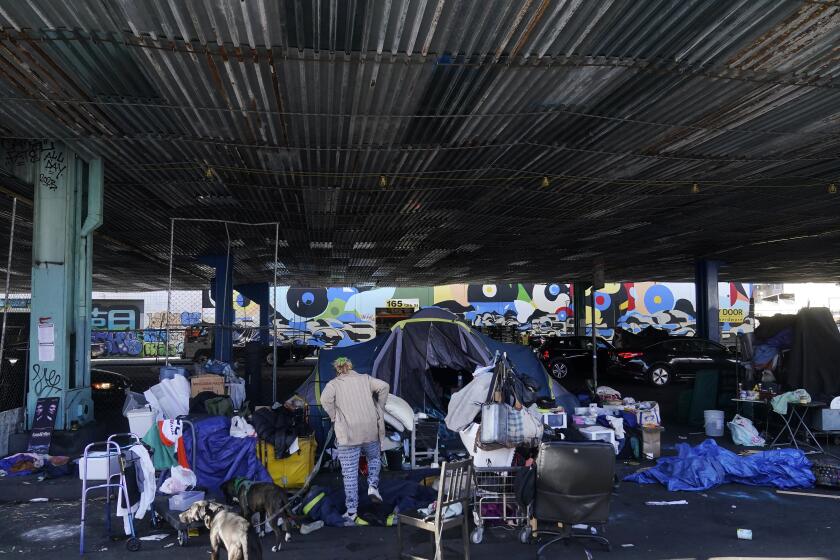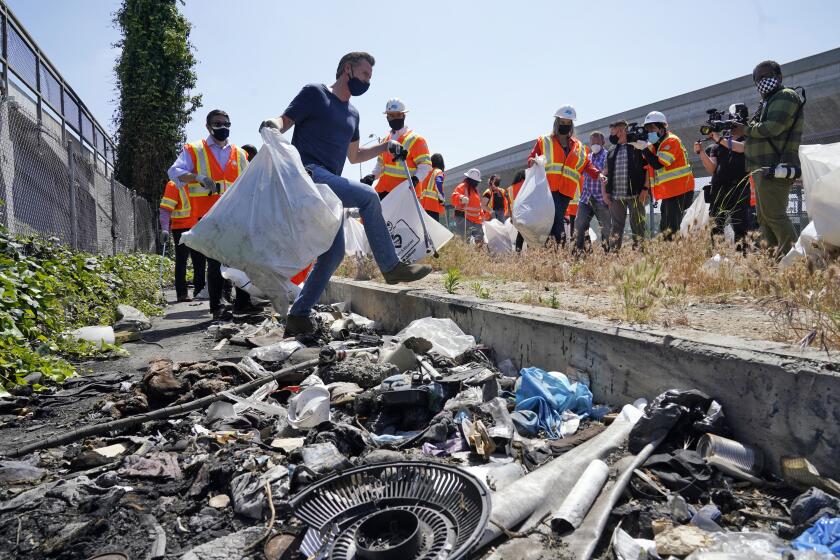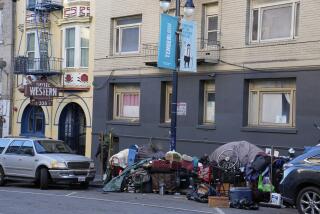Sacramento homeless count shows a 29% drop. But are the results ‘outstanding’ or ‘unbelievable’?
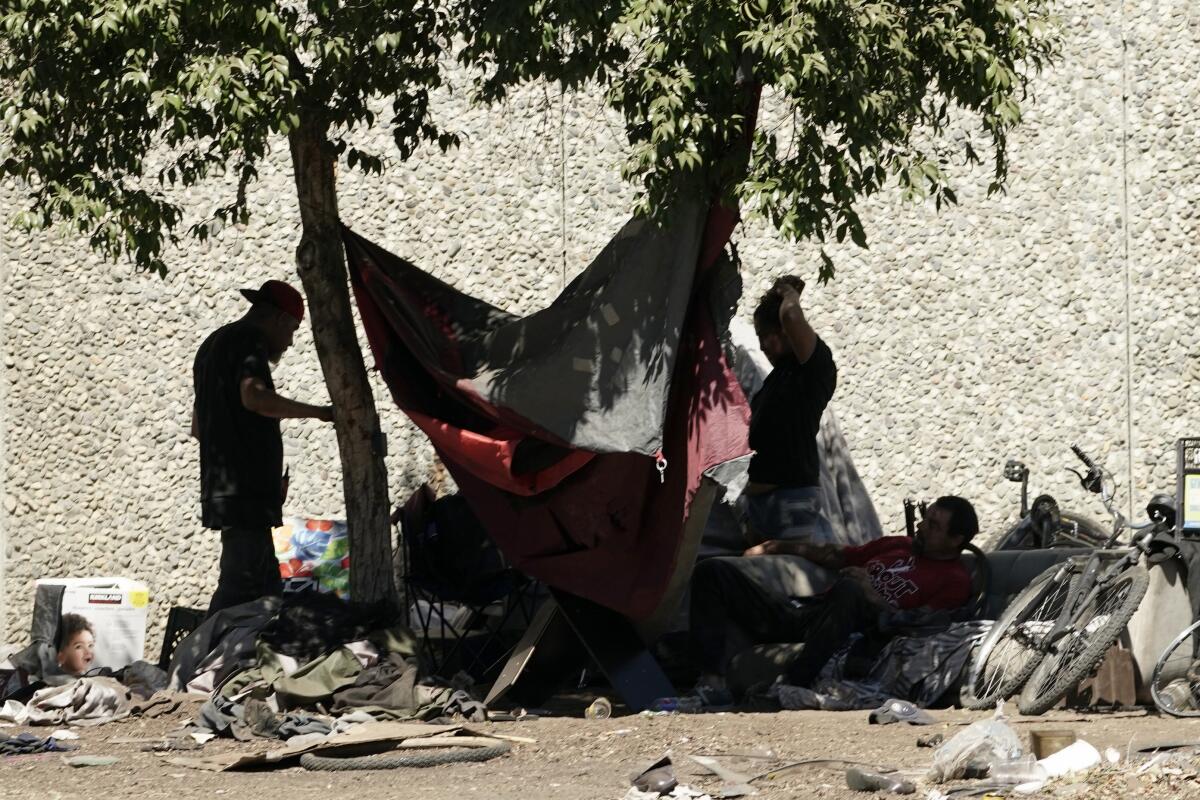
Sacramento officials were elated this week when the results of a biennial point-in-time count showed that the observed local homeless population had declined by a whopping 29% — the biggest decrease city and county leaders had seen in more than a decade.
Although homelessness in the region is still higher than it was five years ago, the county’s homeless population plunged from 9,278 in 2022 to 6,615. The region also saw a 41% decline in the number of people living outside in tents and makeshift shelters, from 6,664 to 3,944.
Officials applauded the progress and expressed optimism in social media posts, news releases and at a news conference.
“There are still too many people who are homeless for us to declare victory, but maybe homelessness is not so intractable after all,” said Sacramento Mayor Darrell Steinberg. “The 41% reduction in unsheltered homelessness is dramatic and affirms that the steady course we set seven years ago to address this state and national crisis is working.”
A unique lease with California’s capital established a camp and guaranteed housing. A year later, the city is terminating the agreement.
“These results are truly outstanding and, undeniably, reflect Sacramento city and county ‘all in’ approach to addressing this crisis,” said Lisa Bates, chief executive of Sacramento Steps Forward, the nonprofit that administers the region’s continuum of care and coordinates the homeless count and the region’s homelessness response.
But the decline was so dramatic that one of the largest nonprofit homeless services providers in the region questioned the count’s accuracy.
“These numbers are incredibly difficult to believe and further highlight the trust issues with local government that our guests have consistently expressed over our many years of service,” Loaves and Fishes said in a written statement. “All campus programs have reported serving more guests daily than last year.”
The nonprofit said it saw a 6.4% increase in the number of homeless people seeking services from 2022 to 2023, including a 21% increase in meals served.
Shannon Dominguez-Stevens — director of Loaves and Fishes’ Maryhouse, a daytime shelter for women and children — said she anticipates those numbers will further increase this year.
“Just anecdotally, on a day-to-day basis, we’re seeing more people come to us in crisis [mode], having just lost housing and unable to find shelter beds,” she said. “It’s surprising, and frankly it’s absolutely unbelievable there’s been such a decrease in the community. It doesn’t make sense.”
The city of Long Beach saw a drop in homelessness for the first time in seven years, while the unhoused population continued to grow in Orange County from 2022 to 2024.
Dominguez-Stevens said she was skeptical of Simtech Solutions Inc., the new firm hired by Sacramento Steps Forward to help conduct the count and analyze the data. Previous homeless counts were conducted with assistance from Sacramento State University.
She said the new firm used a different methodology to collect and analyze data.
Additionally, she said, city and county leaders increased homeless encampment clearing activity over the last two years, causing homeless people to distrust government officials and go deeper into hiding.
Dominguez-Stevens also worries the 2024 point-in-time numbers will negatively affect government funding for housing and supportive services.
At least twice over a week, Sacramento has violated a court order against clearing homeless encampments as temperatures hit triple digits.
The biennial point-in-time homeless count is required by the U.S. Department of Housing and Urban Development and is used to help determine how federal funding for services should be allocated. The data also help government entities like Sacramento County quantify and categorize their homelessness populations to determine what services and resources are needed in particular areas.
Dominguez-Stevens said raising concerns about the results was not meant to create tension between the nonprofit and the county.
“But we are an organization that is dedicated to amplifying the voices of people who are experiencing homelessness in our community,” Dominguez-Stevens said. “And the only way to do that is continue to advocate even if our advocacy causes some feathers to be ruffled.”
County officials said they were anticipating a fair amount of healthy skepticism when the results came out.
“We double-checked, tripled-checked and looked at our methodology,” Bates said. “We went back to our national consultant, we were going every which way to see if there’s anything here from a methodology standpoint that would warrant us to be concerned, and that led us to look at other data in our system, and so it’s those things that led us to conclude that these numbers stand.”
Trent Simmons, data analytics director for Sacramento Steps Forward, said Simtech Solutions was selected because it had conducted more than 300 point-in-time counts across the country. It used a census-tract methodology compared against the four-mile zones used in previous counts.
“I don’t think there’s anything defective to point in one direction over the other,” he said.
The California State Auditor’s Office analyzed homelessness spending at the behest of lawmakers concerned about efficacy.
The firm also provided a mobile app for volunteers to input data, which it collected and analyzed. Simmons said there were no reports of any major glitches, and support staffers with the firm were on standby to address any issues.
City and county officials said the drop in homelessness is a reflection of the partnership they established in 2022 after the homeless population shot up by 67% between 2019 and 2022, surpassing that of San Francisco.
That partnership led both agencies to pool their resources to boost the number of outreach teams, shelter bed capacity and create a coordinated entry system to ensure people are accessing the homeless services they need, officials said.
Additionally, officials said rents in the region have dipped by 3% and apartment vacancy rates have risen by 58% since 2022.
The call to ramp up accountability is the latest example of Newsom pointing at local governments for the failure to lessen homelessness, which has only worsened in his tenure.
Steinberg said the doubts expressed about the results of this year’s homeless count do not dampen the celebratory mood surrounding the results.
“When the numbers went up in 2022, those of us in the trenches accepted that reality,” he said. “Now that we have some much more hopeful news, and by the way I have been measured about this, this is not a declaration of victory, but it does represent astounding progress.”
More to Read
Sign up for Essential California
The most important California stories and recommendations in your inbox every morning.
You may occasionally receive promotional content from the Los Angeles Times.


